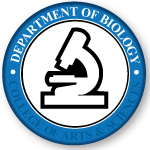Document Type
Article
Publication Date
6-2-2015
Publication Title
BMC Genomics
Volume
16
Abstract
Background: Animals experience stress in many contexts and often successfully cope. Individuals exhibiting the proactive versus reactive stress coping styles display qualitatively different behavioral and neuroendocrine responses to stressors. The predisposition to exhibiting a particular coping style is due to genetic and environmental factors. In this study we explore the neurotranscriptomic and gene network biases that are associated with differences between zebrafish (Danio rerio) lines selected for proactive and reactive coping styles and reared in a common garden environment.
Results: Using RNA-sequencing we quantified the basal transcriptomes from the brains of wild-derived zebrafish lines selectively bred to exhibit the proactive or reactive stress coping style. We identified 1953 genes that differed in baseline gene expression levels. Weighted gene coexpression network analyses identified one gene module associated with line differences. Together with our previous pharmacological experiment, we identified a core set of 62 genes associated with line differences. Gene ontology analyses reveal that many of these core genes are implicated in neurometabolism (e.g. organic acid biosynthetic and fatty acid metabolic processes).
Conclusions: Our results show that proactive and reactive stress coping individuals display distinct basal neurotranscriptomic states. Differences in baseline expression of select genes or regulation of specific gene modules are linked to the magnitude of the behavioral response and the display of a coping style, respectively. Our results expand the molecular mechanisms of stress coping from one focused on the neurotransmitter systems to a more complex system that involves an organism’s capability to handle neurometabolic loads and allows for comparisons with other animal taxa to uncover potential conserved mechanisms.
Recommended Citation
Wong, Ryan Y.; Lamm, Melissa S.; and Godwin, John, "Characterizing the neurotranscriptomic states in alternative stress coping styles" (2015). Biology Faculty Publications. 71.
https://digitalcommons.unomaha.edu/biofacpub/71
Funded by the University of Nebraska at Omaha Open Access Fund


Comments
© 2015 Wong et al.; licensee BioMed Central. This is an Open Access article distributed under the terms of the Creative Commons Attribution License (http://creativecommons.org/licenses/by/4.0), which permits unrestricted use, distribution, and reproduction in any medium, provided the original work is properly credited. The Creative Commons Public Domain Dedication waiver (http://creativecommons.org/publicdomain/zero/1.0/) applies to the data made available in this article, unless otherwise stated.